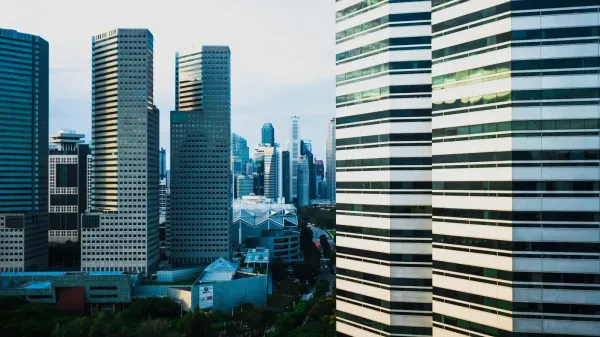
APAC entered 2025 with economic momentum: Q1 GDP growth came in at 3.9%, matching pre-Trump levels.
As President Donald Trump’s second term reboots aggressive U.S. trade policies, uncertainty is casting a long shadow over Asia-Pacific economies—but Singapore and Hong Kong are showing resilience, particularly in commercial real estate.
In its latest briefing, Cushman & Wakefield called out “a hard shift in U.S. economy policy” during Trump’s first 100 days, sparknewing ripple effects across global markets. “Given the flurry of changes,” the report stated, “the word that dominated the marketplace... was uncertainty.”
Despite mounting headwinds, real estate across APAC is holding firm—for now. The region entered 2025 with economic momentum: Q1 GDP growth came in at 3.9%, matching pre-Trump levels.
Singapore and Hong Kong, in particular, have continued to attract investment interest even as regional players brace for volatility.
“Asia Pacific’s real estate market has come into 2025 with momentum,” the report noted, citing “both demand for space and investment volumes trending higher during 2024.” Occupier demand was especially strong, “with contributions from most of the region.”
Singapore stands out for its industrial market stability. Cushman & Wakefield describes it as part of a group of “landlord-friendly” markets, noting “tight vacancy and robust rental growth.” Even as decision-making slows due to policy ambiguity, the city-state’s fundamentals remain solid.
Though Singapore maintains “high levels of trade with the U.S.,” its diversified economy offers a buffer.
The report warned that “selective tariff levels... could cause producers to evaluate their supply chain design,” but also acknowledges that “for some markets a slowdown in trade with the U.S. may not be associated with significant negative industrial real estate demand impacts.”
Hong Kong faces more visible tension due to its financial market exposure. The Hang Seng index is among those the report flags for volatility, cautioning that if markets continue to slide, it could “impact consumer spending, which hits business profitability, then jobs, and eventually would impact the CRE sector.”
Still, Hong Kong maintains a significant trade surplus with the U.S., which could draw future attention from the Trump administration.
The city also shares Singapore’s resilience in real estate: “CRE faces the same uncertainty,” the report admits, “which may delay decision making... However, the fundamentals remain resilient so far.”
The economic outlook hinges heavily on the U.S. “Stagflation—meaning slowing economic growth and sticky inflation—is emerging as the new consensus for 2025,” according to the report. But there’s a silver lining: expected U.S. recovery in 2026 may offer “tailwinds for the Asia Pacific region.”
Meanwhile, Cushman & Wakefield advised a cautious but proactive stance. “Re-evaluate and re-assess your real estate strategy... Determine your organisation’s risk profile and tailor your approach accordingly,” the firm urges occupiers and investors.
With over 230 million square feet of new office space set to complete by 2026 in APAC, the stakes are high. But in cities like Singapore and Hong Kong, the current turbulence isn’t yet cause for alarm.
“Past experience has shown the region can rebound quickly when conditions improve and confidence is restored,” the report concluded.
Source: Singapore Business Review
Share: